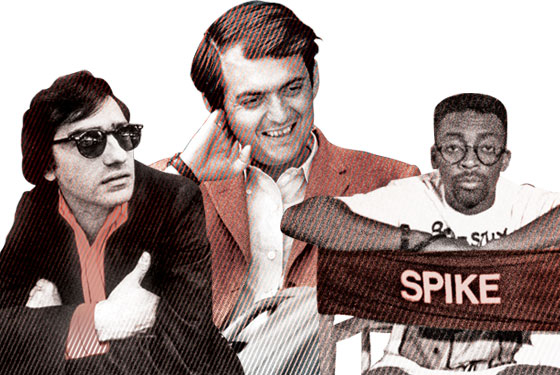
1896
New York is captured on film for the first time in William Heise’s Herald Square. Two years later, a young German-Jewish immigrant named William Morris goes into business as a vaudeville agent.
1906
Vitagraph Studios sets up shop in Brooklyn.
1914
Hollywood makes its first feature, Cecil B. DeMille’s The Squaw Man.
1927
Production in New York becomes virtually obsolete, after the success of “talkie” The Jazz Singer. The city is too loud for sound-film production—for the next twenty years, studio films set here are shot almost exclusively on Hollywood back lots.
1948
Production returns with The Naked City.
1953–54
Elia Kazan and Budd Schulberg make On the Waterfront here, calling it an “Eastern.” And a young photographer from the Bronx named Stanley Kubrick makes his first feature film, Fear and Desire.
1957
Sidney Lumet’s first movie: 12 Angry Men.
1960–69
With the collapse of the studio system, Hollywood starts to go into decline. And the art-house era begins. The New York Film Festival debuts, in 1962. Warhol releases Empire, in 1964. The School of the Arts at NYU is founded, in 1965. Among its first students: Martin Scorsese.
1966
Woody Allen’s first feature: What’s Up, Tiger Lily?, a redubbed Japanese crime thriller.
1970
The X-rated Midnight Cowboy wins Best Picture Oscar. Film Forum opens to the public.
1973
Francis Ford Coppola’s The Godfather wins Best Picture. Mean Streets is a hit at the NYFF.
1976
Taxi Driver.
1978
Woody Allen’s Annie Hall beats out Star Wars for Best Picture at the Oscars.
1979
The Weinsteins start Miramax Films.
1981
Perhaps symbolizing the fact that New York’s golden age has come to an end, Scorsese’s Raging Bull loses out to Robert Redford’s Ordinary People in an Oscar telecast that was postponed after John Hinckley Jr.’s Taxi Driver–inspired attempt to kill Ronald Reagan.
1984
Jim Jarmusch’s Stranger Than Paradise. Over the next decade, as indies reshape the city, New Yorkers (Michael Eisner, Jeffrey Katzenberg, Dawn Steel) take over Hollywood.
1986
Spike Lee’s first feature: She’s Gotta Have It.
1989
Do the Right Thing.
1990
James Schamus and Ted Hope form the production company Good Machine. Along with Killer Films and the Shooting Gallery, they will help make New York the place for indie producers and directors.
1993
Disney acquires Miramax. In 1997, The English Patient will dominate the Oscars—the mainstreaming of indie film is complete.
2001
September 11 prompts many to wonder if production will recover; the NYFF premieres The Royal Tenenbaums.
2002
Woody Allen makes his first and only appearance at the Oscars, to introduce a clip celebrating New York filmmaking. The Tribeca Film Festival starts. Universal acquires Good Machine, refashioning it into Focus Features.
2005
Eisner steps down as CEO of Disney—only to be replaced by another New Yorker, Robert Iger; Bronx-born Brad Grey becomes CEO of Paramount. The IFC Center opens.
2006
New York hits a record high for film and TV production.
2007
Steiner Studios in Brooklyn’s Navy Yard announces plans to double its size. And Scorsese finally wins his Oscar—by making a film in Boston. Wes Anderson, Noah Baumbach, and the Coen brothers dominate the NYFF.
